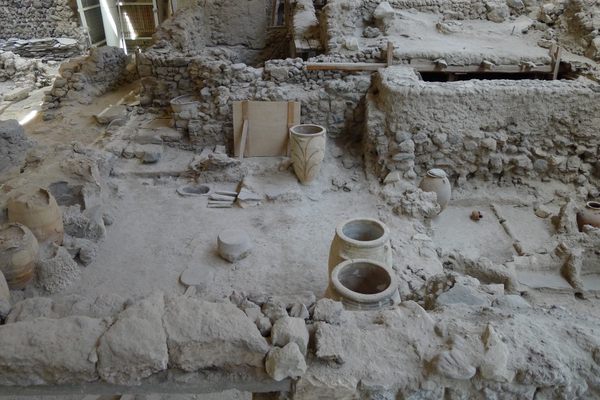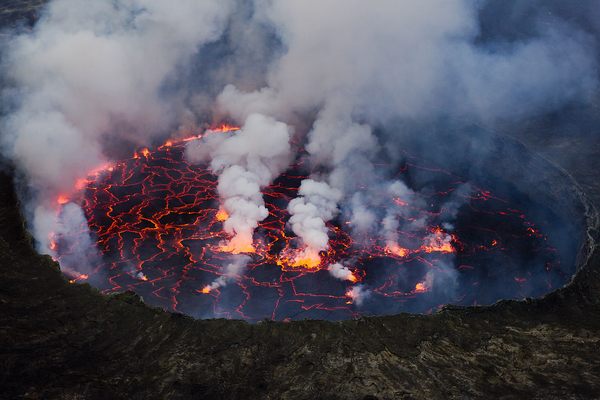Why Hawaiians Place Plants Before a Wall of Hot Lava
Ti leaves have long been thought to have powers of protection.

Among the astounding and forbidding images of the Kilauea eruption on the Big Island of Hawaii, there is a striking photo of lava advancing on a row of leafy branches, stuck into a crack in a pavement so that they look like a row of soldiers about to be overwhelmed by an enemy army. These are ti leaves, and the Associated Press identifies them as a “sacred offering” to Pele, a goddess associated with fire and volcanoes.
In 1986, during another Kilauea eruption, a UPI reporter noticed a similar detail. “Hawaiians scattered sacred ti leaves atop rampaging lava flows disgorged by fiery Kilauea volcano,” he wrote. “Tradition has it that surging lava flows won’t cross a ti leaf barrier.”
Ti plants (also called ki) have had many uses in Hawaii over time. They’re made into skirts, coats, and shoes; they’re woven into leis and used in thatched roofs. They’re wrapped around fish or meat and used as medicine.
But as Darde Gamayo writes for Big Island Now, “Early Hawaiians believed that the ti leaf plant had great spiritual power.” The leaves were associated with Lono, a god of fertility, and Laka, the goddess of hula, and they were used in rituals by religious and political leaders. In The Ruling Chiefs of Hawaii, the historian Samuel Kamakau describes how ti leaves were used in a ceremony to end restrictions on eating pork, for instance. Today, they’re still used in offerings to Pele at the rim of the Kilauea, a practice that has been popularized (and misunderstood) by tourists.

Sometimes, ti leaves are associated with protection from volcano-related dangers. One anthropologist in the 1920s observed ti leaves being used to shield a woman visiting a volcano, and ti leaves were carried by people performing the feat of walking on still-hot lava.
But over their long history in Hawaii (they’re thought to be “canoe plants,” brought to the islands with settlers from Polynesia), ti leaves have come to be thought of, more generally, as a plant that offers protection. They’re often used to keep away evil spirits. The anthropologist was told that ti leaves were laid under bed mats for this reason; some people believe the plants can contain vengeful spirits in their graves. Traveling with pork can attract “angry spirits,” too, and the leaves offer some protection. One of the more common ways to use ti leaves for protection is to plant them around your house.
Hundreds of people have had to evacuate the area where the volcano’s lava is flowing, and in four days, the eruption destroyed 35 homes and other buildings. For people hoping that their houses will survive, anything that could offer extra protection could be worth a try.

















Follow us on Twitter to get the latest on the world's hidden wonders.
Like us on Facebook to get the latest on the world's hidden wonders.
Follow us on Twitter Like us on Facebook